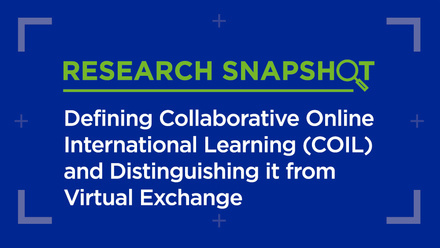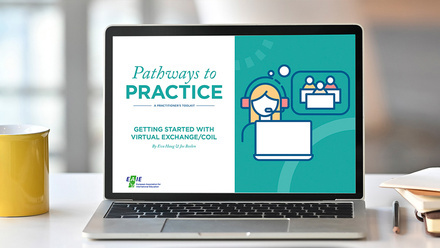Finding the digital balance for teachers and learners

At National University, we make extensive use of digital platforms to reach and teach our students. Most of our classes are held online and others are hybrid, combining in-person and online components. As a veteran-founded institution whose goal is to make education accessible to traditional and non-traditional students across the US state of California, as well as at military bases and even aboard navy ships, we have found digitalisation to be of enormous benefit in a variety of ways.
In this article, I will lay out the benefits and challenges of three different aspects of digitalisation in higher education: online platforms, live collaboration and digital tools. For each, I will try to provide some advice on how to overcome possible hurdles.
Online platforms
We use an online platform to house our courses. Course shells are created by our design team and then uploaded into Blackboard. Instructors can add resources and personalise the courses, while the professionally designed shells, with faculty-approved course outlines, provide a streamlined, consistent look and feel, helping students to navigate seamlessly from course to course. The availability of older course shells for instructors to refer to is also a great advantage. Students often email me to ask for information on an old assignment or research question that they have lost track of and want to pursue, and I am easily able to go back into the course and find their work. Having assignments and grades available online makes this possible. It would be cumbersome, if not impossible, to keep multiple drafts of student work from two or three terms ago in traditional, in-person classes.
But while it is extremely helpful to have these streamlined course shells, it is important to find the right balance between consistency and academic freedom. Faculty must be allowed to personalise their courses, which can be done with additional resources, readings and targeted discussions based on the individual course make-up.
Live collaboration
One of the most important aspects of effective teaching and learning is connecting with students in a meaningful way. For online instruction to be successful, there needs to be an emphasis on student-to-student, student-to-instructor and student-to-content interaction. As an instructor, it’s important for me to answer questions, engage in debate and share experiences in a live setting. With online tools such as Collaborate and Illuminate, instructors can interact with students in real time, bridging the gap created by an online environment. Through weekly collaborative sessions with my students, I can facilitate and guide peer discussions, answer questions and clarify concepts in real time. Students enjoy these sessions and find the discussions with peers especially enriching, allowing them to connect with the instructor and share ideas with fellow students. I have found that real-time interaction is far more engaging for students than merely interacting asynchronously on a discussion board.
It is always challenging to build personal connections and student engagement – with each other and with the instructor – in a virtual classroom. It’s important to provide multiple opportunities for collaboration and group work, for discussion and debate, and for peer critique. In addition, it’s essential that lines of communication are kept open, whether through email, phone or text.
Digital tools
Having an online platform with easily accessible technology allows us to provide students with choice in how they demonstrate understanding. Instructors can use digital content such as YouTube videos, movies, Powtoons, Prezis and TED talks to deliver instruction, rather than the standard lecture or PowerPoint presentation. In turn, students feel empowered by the choices available to them and by the differentiation of content, process and product. I am consistently impressed by the creativity that this engenders among students. It allows them to showcase their individual talents and strengths in a visually appealing and technically sophisticated manner while internalising the essential concepts being taught. One way in which we use technology for self-assessment is to have students create digital portfolios where they upload and highlight the assignments and products they found most effective. Students not only showcase their work but have the opportunity to reflect on each piece and how it has transformed them as a learner. At my previous university, I had students build websites that incorporated all of the content and teaching strategies they were exposed to in the course.
But while technology is a great resource, not all students and instructors are equally familiar with or adept at using digital tools. At times, the sheer number of resources and choices can be overwhelming and intimidating for students. It’s important that choices for papers and presentations include standard essays as well as other formats. It’s also crucial to judge content on its merits and not only on the digital aspect of the presentation.
Careful navigation
There are certainly many more benefits and challenges to digitalisation in higher education than are covered here. It’s apparent from what I’ve discussed, however, that while digitalisation can be a powerful tool and resource, it’s important to think carefully about potential challenges. While online teaching and learning are lauded for increasing opportunity for all students, there are economic considerations, such as availability of technology, that can be a hindrance to some. While digital tools and uniform course outlines can be effective in terms of consistency, they can be perceived as squelching academic freedom for faculty. And while choice allows freedom and creativity, it can also be confusing and overwhelming. It behooves us, then, to be careful in how we implement digitalisation and to be mindful of potential problems, so that we can navigate this exciting new space effectively.






